

When students embark on their academic journey, self-assessment and improvement become vital skills that can greatly enhance their learning experience. Mistakes are an inevitable part of this process. The key to harnessing these mistakes lies in how students approach correction and self-reflection. Here are actionable strategies that students can use to correct mistakes in their approach to self-assessment and improvement.
Self-assessment is the process through which students evaluate their own understanding and performance. This involves reflecting on what they know, identifying gaps in their knowledge, and recognizing the areas where improvement is needed.
Key Components of Effective Self-Assessment:
To correct mistakes in self-assessment, students must first learn to identify different types of mistakes and their implications:
Once students have identified mistakes in their self-assessment, they can employ several strategies to correct their approaches:
Encourage students to set aside time for regular self-reflection. This could involve journaling about their learning experiences, successes, and challenges. Reflection prompts may include:
Students should not rely solely on their self-assessment. Feedback from peers, teachers, or mentors can provide valuable insights. They should:
Adopting a growth mindset involves viewing mistakes as opportunities for growth rather than failures. Students can correct their self-assessment approach by:
Students should learn to set SMART goals (Specific, Measurable, Achievable, Relevant, Time-bound) based on their self-assessment. For example:
Maintaining a progress log can be a powerful tool in self-assessment. Students should:
Encouraging students to reframe their perception of mistakes is crucial. They should recognize that mistakes are not only normal but also essential for growth. Here’s how to embrace mistakes effectively:
Self-assessment is not a static process; it requires continuous learning. Students should:
Ultimately, correcting mistakes in self-assessment and improvement is about cultivating a culture of continuous learning. Students should view their education as a journey—one filled with opportunities for growth and development. By embracing mistakes, actively engaging in self-reflection, and seeking feedback, students can transform their learning experiences and set themselves up for success.
In summary, students can correct mistakes in their approach to self-assessment and improvement by understanding the nature of their errors, employing targeted strategies for correction, documenting their progress, and fostering a mindset that embraces learning from mistakes. By doing so, they will not only enhance their academic performance but also develop lifelong skills that will serve them well beyond the classroom.
 100% |  Global |  97% | |
|---|---|---|---|
Professional Tutors | International Tuition | Independent School Entrance Success | |
| All of our elite tutors are full-time professionals, with at least five years of tuition experience and over 5000 accrued teaching hours in their subject. | Based in Cambridge, with operations spanning the globe, we can provide our services to support your family anywhere. | Our families consistently gain offers from at least one of their target schools, including Eton, Harrow, Wellington and Wycombe Abbey. |
 100% |
|---|
Professional Tutors |
| All of our elite tutors are full-time professionals, with at least five years of tuition experience and over 5000 accrued teaching hours in their subject. |
 Global |
International Tuition |
| Based in Cambridge, with operations spanning the globe, we can provide our services to support your family anywhere. |
 97% |
Independent School Entrance Success |
| Our families consistently gain offers from at least one of their target schools, including Eton, Harrow, Wellington and Wycombe Abbey. |
At the Beyond Tutors we recognise that no two students are the same.
That’s why we’ve transcended the traditional online tutoring model of cookie-cutter solutions to intricate educational problems. Instead, we devise a bespoke tutoring plan for each individual student, to support you on your path to academic success.
To help us understand your unique educational needs, we provide a free 30-minute consultation with one of our founding partners, so we can devise the tutoring plan that’s right for you.
To ensure we can best prepare for this consultation, we ask you to fill out the short form below.